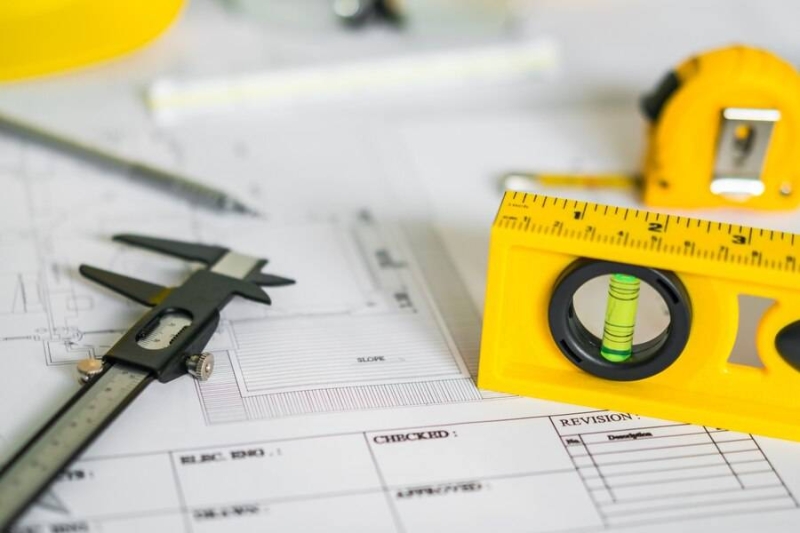
In this article we will be focusing on civil and construction engineering education among the several engineering disciplines. Civil and construction engineering is directly linked to the physical world around us. The roads we travel, the buildings we live in, the canals that irrigate our fields, and the hydropower plants that generate electricity are all products of this field.
Unlike some disciplines, civil engineering requires more hands-on learning to truly understand how theories apply in practice. However, relying only on traditional classroom teaching is not enough to prepare students for the competitive global job market. Field visits are a key part of civil and construction engineering education because they give students a chance to deal with real-world challenges.

They help bridge the gap between textbook knowledge and practical application, allowing students to experience concepts firsthand that are difficult to grasp in a classroom setting. As a teacher, it often feels unfair to teach subjects like railway engineering without ever having seen a railway system. During my student years, I learned about beam deflections, RCC design and steel structures, yet mostly lived in mud mortar and brick masonry buildings.
This disconnect between theory and reality made it difficult to fully understand practical applications. Some field visits, such as those for engineering geology courses, are particularly effective. These trips are well-structured and practical, helping students learn by directly observing geological formations, studying soil and rock properties, and understanding real-world challenges like slope stability.
This hands-on learning makes the concepts clearer and more relatable. Other subjects should follow this structured model to ensure students gain valuable insights instead of just casually observing sites without clear objectives. Unfortunately, in many institutions, field visits have become more of a formality than a true learning experience.
In some cases, they are treated as recreational trips, with students and administrators even clashing over the selection of the route. This misuse of field visits not only wastes valuable time but also leads to inefficient use of the budget meant for academic enrichment. To make field visits meaningful, they need to be structured with clear goals.
Students should be given specific tasks, such as analysing construction methods, identifying building materials, or studying infrastructure challenges. Their learning should be evaluated based on what they knew before the visit versus what they learned afterward. For example, while teaching construction materials to first-semester students, I took them to a provincial stadium construction site at Surkhet.
Their task was to identify the materials used and observe their properties and uses. Later, they visited hardware stores to learn about the availability and types of construction materials. This simple yet practical exercise helped them better understand the subject by interacting with real materials.
Field visits are also essential for helping students develop problem-solving skills. They should focus on real-world challenges such as road embankment stability, landslide prevention and foundation design on slopes. This approach allows students to apply their theoretical knowledge to practical scenarios, boosting their critical thinking abilities.
A recent example demonstrating the value of field-based learning is the Jajarkot Earthquake of 2023 in Nepal. Following the disaster, the government is involving students in building damage assessments after providing them with specialised training, though the initiative started late. This hands-on experience enhances their technical skills and gives them an opportunity to contribute meaningfully to the nation's recovery efforts.
Such initiatives demonstrate how field-based education empowers students while benefiting society, fostering a sense of social responsibility and practical expertise. However, implementing effective field-based learning in Nepal is not without challenges. Limited access to infrastructure projects, logistical difficulties and lack of resources often make it hard to organize meaningful visits.
Additionally, weak collaboration between universities and industry reduces the opportunities for large-scale field projects. Stronger partnerships with construction companies, government agencies and consulting firms could help students gain more exposure to real-world engineering practices. While physical field visits remain invaluable, technology is playing an increasingly significant role in education.
Many universities worldwide now integrate virtual site visits, 3D models and simulations to offer students immersive learning experiences. Tools such as 360-degree videos, drone footage and interactive virtual models enable students to explore construction sites remotely, making learning more accessible and helping overcome budget constraints. However, in countries like Nepal, relying too heavily on platforms like YouTube rather than adopting advanced educational technologies carries risks.
Although YouTube provides useful resources, it cannot replace structured, hands-on learning experiences. Overdependence on online content could diminish the role of professors and universities, weakening the overall quality of education. Therefore, while virtual learning tools should complement field visits, they should not replace them.
As Nepal aims to strengthen its engineering education, universities, industries and policymakers must collaborate to promote meaningful field-based learning. By integrating well-structured field visits with new technologies, students will be better prepared to tackle real-world engineering challenges and contribute effectively to the nation's development..















